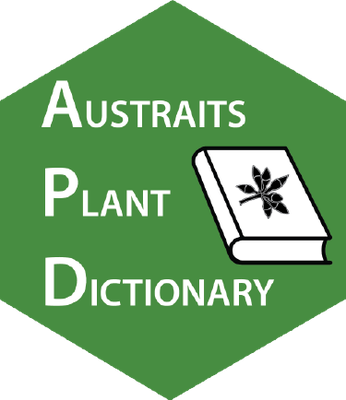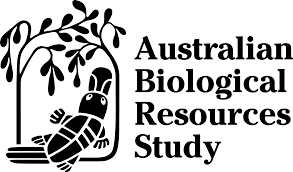
AusTraits is an open-source, harmonized database of Australian plant trait data. It synthesises data on nearly 500 traits across more than 30,000 taxa from field campaigns, published literature, taxonomic monographs, and individual taxon descriptions. Begun in 2016 as an initiative between three lab groups, it has grown to be the largest collation of plant trait data for Australian plants.
AusTraits integrates plant trait data collected by researchers from diverse disciplines, including functional plant biology, plant physiology, plant taxonomy, and conservation biology. By harmonizing and error checking values, linking all AusTraits data entries to detailed metadata, and documenting trait and trait values definitions, AusTraits is a resource researchers can trust and use for their research agendas with minimal additional filtering or manipulations.
An AusTraits data paper was published in Scientific Data in 2021 and is available at: 10.1038/s41597-021-01006-6.
Accessing and Using AusTraits
Access and use
A compiled version of AusTraits is available for download on Zenodo. As detailed on Zenodo, AusTraits has been released under an open source licence (CC-BY 4.0), enabling re-use by the community.
An R package, austraits, allows the seamless download of AusTraits and includes a selection of functions that facilitate the exploration and use of AusTraits. Visit AusTraits R Package to access and learn more about this resource.
A tutorial offers examples of how to explore and analyse AusTraits.

Learn more
AusTraits is a relational database, with 11 elements, jointly storing the trait data, study metadata, and information about the AusTraits structure and build. Visualisations of these elements and the linkages between them are here to orient AusTraits users. Further information on AusTraits is available on the project’s GitHub repository and in an accompanying online book on the traits.build GitHub repository, including chapters on the database structure. The AusTraits Plant Dictionary is available here.
AusTraits project outputs
The AusTraits Plant Dictionary (APD)
The trait definitions used to map data within AusTraits have been developed into a formal vocabulary, the APD. The APD extends the core information required by the AusTraits workflow and releases all trait definitions in both machine-readable RDF representations and human-friendly outputs (html & csv documents). The dictionary includes trait description metadata required by the pipeline that builds AusTraits including accepted units (for numeric traits) and either explicitly allowed (and defined) values (for categorical traits) or an allowed range (for numeric traits). The APD also includes references for traits, links to other trait databases, ontologies and thesauri providing data or definitions for the same trait concept, keywords, and hierarchical categories for easy data searching. The APD can also be accessed through the ARDC’s Research Vocabulary Australia portal.
The AusTraits team held a series of workshops from 2021-2023 to review and revise 29 trait definitions associated with seeds and germination, 49 trait definitions associated with plant growth form and leaf morphology, and 35 traits associated with fire response and plant regeneration. These workshops considered the scope of each trait concept, crafted explicit trait descriptions, and refined allowable trait values (terms for categorical variables and ranges for continuous variables). An additional 114 traits have been reviewed by 1-2 subject experts. These are predominately traits related to plant physiology or floral structure. The remaining traits were revised by the AusTraits team.
The APD was published as a data paper in Scientific Data in May 2024 and is available at: doi: 10.1038/s41597-024-03368-z.
Transforming taxonomic descriptions into trait data tables
Taxonomic descriptions for most of Australia’s 30,000+ plant species are available in online floras maintained by state and national herbaria. One of our initiatives has been to use algorithms to extract key trait data from these paragraphs of information, providing an easy-to-search, tabular formulation of the taxonomic descriptions. This effort has led to the extraction of 570,000 distinct trait values across 36 traits. These data are available in AusTraits and the method used is described in Coleman et al. 2023.
For three traits, life history, plant growth form, and woodiness, we manually gap-filled data for nearly all taxa in Australia, creating complete trait tables that can be readily used for diverse research projects. The protocols used and coverage are described in a paper published in the Australian Journal of Botany in May 2024: doi: 10.1071/BT23111.
Enhanced access options
The AusTraits team has developed a project API along the distribution of AusTraits data to other biodiversity platforms, including the Atlas of Living Australia (ALA), EcoCommons, and the Flora of Australia. ALA’s taxon pages each have a traits tab offering a summary of the AusTraits' trait data for that taxon and a link to download that taxon’s raw data from AusTraits. The ALA traits tabs are visited about 2000 times a day.
traits.build: a data model, workflow and R package for building harmonised ecological trait databases

The traits.build database structure has a documented data standard (data model), that aligns with established ontologies including the Extensible Observation Ontology (OBOE), the Ecological Trait-data Standard (ETS), and Darwin Core.
In addition to AusTraits, two other trait databases for disparate traits and taxonomic groups have been built in the past year, with several others in progress.
A description of the traits.build data model, workflow and R package was published as a data paper in Ecological Informatics in August 2024 and is available at: doi: 10.1016/j.ecoinf.2024.102773.
APCalign: an R package for aligning and updating names of Australian vascular plants

The R code used by AusTraits to align names with the APC and APNI has been generalised into a standalone R package, {APCalign}, and accompanying ShinyApp that makes this workflow available to all researchers. It corrects typos, standardises syntax (including for phrase names), and updates names to the currently accepted taxon name (per the APC). The core functions within the package allow a user to read in a list of “original names” and output a list of names aligned to the APC.
A description of the APCalign R package was published in the Australian Journal of Botany in May 2024 and is available at: doi: 10.1071/BT24014.
Current AusTraits aims
AusTraits funding
The AusTraits project is currently receiving investment from the Australian Research Data Commons (ARDC) through their Plant Research Data Commons program. From 2021-2023 AusTraits received ARDC investment through their Australian Data Partnerships program, to grow the database into a National Data Asset. The ARDC is funded by the National Collaborative Research Infrastructure Strategy (NCRIS). The AusTraits core team and broader team of ARDC partners are jointly working on a collection of work packages to achieve this goal.
Contributing new data to AusTraits
To contribute trait data to AusTraits, please contact us. Briefly, we require your data contribution as a spreadsheet in conjunction with accompanying metadata, as described on our GitHub repository. We also accept any legacy datasets, either from your archives or transcribed from published data sources.
Expanding coverage of key traits
During our previous project phase we created near-complete datasets for three core traits, plant growth form, life history, and woodiness. Our success in sourcing information for nearly all Australian vascular plants has guided our decision to select additional traits to manually gap fill. Through a series of workshops in 2024-2025 we will select traits deemed essential for assessing species’ responses to disturbance (especially from fire), climate change (especially to drought, extreme temperatures), and reproduction (e.g. pollination traits, flower colour).
Explore utility of trait data for determining species' susceptibility to threats
A clear application of AusTraits data is to determine workflows for species' trait values to be used in conservation planning and management decisions and for priority research questions in the face of climate and environmental change. In addition to expanding trait coverage, AusTraits team is currently exploring how trait data can help inform threatened species' susceptibilities to various threats.
Output synthetic data summaries
Between 2024-2026 we will be developing a workflow to release species and species-by-location trait data summaries as core AusTraits outputs. This translation of raw plant trait data to synthesised outputs ensures reliable data and information products are available to form the building blocks for environmental assessments across diverse research sectors.
Offer guidance to traits.build users
The traits.build R package offers an off-the-shelf workflow for building trait databases for any taxonomic group or collection of traits. Our extensive book offers tutorials and exhaustive descriptions of how to build a new database. However, many users will wish to pair these resources with some one-on-one help to start a new database, and the AusTraits team is available to provide guidance to traits.build users.
Funding
ARDC Funding 2019 - Initial funding
ARDC Funding 2021-2023 - More information can be found here including co-investment partners
Recent Publications
Below are some recent publications using AusTraits. You can access a full list of publications via AusTraits on Google Scholar.
- Falster DS, Gallagher RV, et al. (2021) AusTraits, a curated plant trait database for the Australian flora. Scientific Data 8, 254. doi: 10.1038/s41597-021-01006-6
- Coleman, D, Gallagher RV, Falster D, Sauquet H, and Wenk E (2023) A Workflow to Create Trait Databases from Collections of Textual Taxonomic Descriptions. Ecological Informatics 78: 102312. doi: 10.1016/j.ecoinf.2023.102312
- Wenk, EH, Sauquet H, Gallagher RV, Brownlee R, Boettiger C, ColemanD , Yang S, et al. (2023) The AusTraits Plant Dictionary. bioRxiv. doi: 10.1101/2023.06.16.545047.
- Andrew SC et al. (2021) Functional diversity of the Australian flora: Strong links to species richness and climate. Journal of Vegetation Science 32. doi: 10.1111/jvs.13018
- Gallagher RV et al. (2021) High fire frequency and the impact of the 2019–2020 megafires on Australian plant diversity. Diversity and Distributions 27: 1166–1179. doi: 10.1111/ddi.13265
Contact
- austraits.database@gmail.com
- UNSW Sydney, Kensington, NSW 2035













